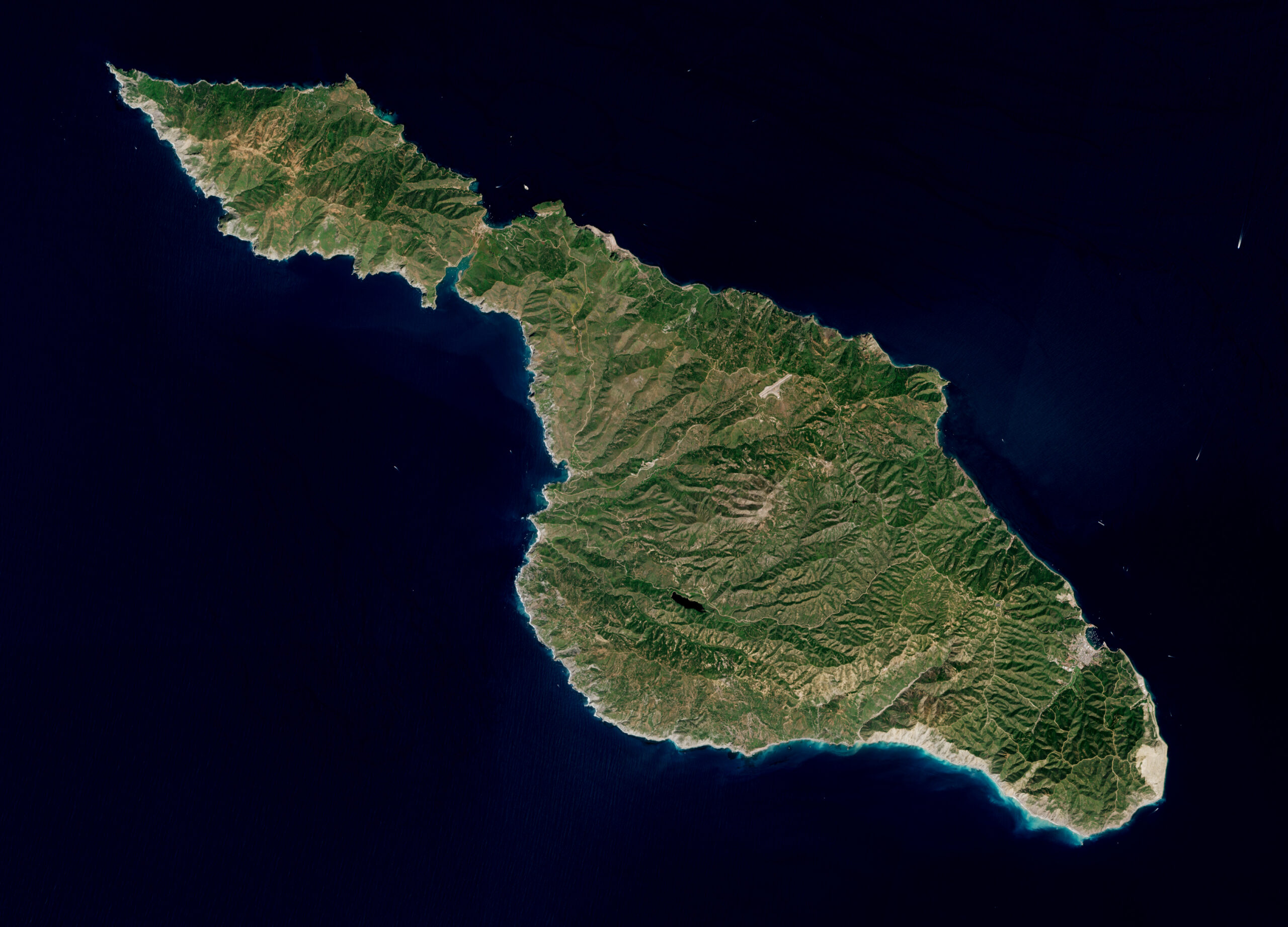Santa Catalina Island satellite image.
In the annals of World War II history, the role of the Office of Strategic Services (OSS) stands out as a testament to the power of intelligence and covert operations. As the precursor to the modern Central Intelligence Agency (CIA), the OSS was instrumental in gathering critical information and conducting clandestine operations behind enemy lines. One of the lesser-known aspects of the OSS’s operations, however, was its use of Santa Catalina Island, a picturesque island off the coast of Southern California. The OSS’s files concerning the base remained classified until the 1980s.
During World War II Catalina Island, as it is most commonly known, served as a military training facility and was closed to the public. The OSS initially leased two parcels of land on Catalina Island, Toyon Cove and Cherry Valley, from the Santa Catalina Island Company (SCICO) on 10 December 1943. A supplement to the original lease, dated 21 February 1944, added two more parcels, Gallagher’s Beach and White’s Landing. However, the lease expired after six months, and no documentation is available regarding its renewal.
On 1 April 1945, the OSS and SCICO entered into a new lease (OSS-1090) for six parcels on Catalina Island, totaling 188.65 acres. These parcels included Toyon Cove, Gallagher’s Beach, White’s Landing, Fourth of July Cove (also known as Cherry Valley Cove), Howland’s Landing, and Emerald Bay/Johnson’s Landing. The lease also contained an option to lease Cherry Cove. A term included in the lease allowed for the right to practice temporary landing operations on all other beaches on Santa Catalina Island, except those in the City of Avalon.
Santa Catalina Island Company (SCIO) was established in 1894 by the Banning brothers, sons of General Phineas Banning, who purchased Catalina Island in 1892. Later, in 1919, it was acquired by William Wrigley, Jr., who aspired to transform Catalina Island into a top-tier resort location. The Wrigley family’s descendants remain the owners of the SCIO to this day, persistently expanding and refining William Wrigley, Jr.’s original concept.
OSS Training on Catalina Island
The OSS established its main base at Toyon Bay, a sheltered inlet two miles from the island’s main town of Avalon. Toyon Bay was home to a former boarding school, which the OSS converted into barracks, a mess hall, administration offices, and classrooms. The rugged terrain surrounding the cove was perfect for testing the recruits’ physical endurance, and resembled the geography the men would find in East Asia.
The commandos who trained on Catalina Island were primarily attached to the OSS’s Maritime Unit. This joint-service maritime component was tasked with conducting amphibious infiltration, underwater sabotage, agent infiltration, and supplying resistance groups by sea. In addition to these operational duties, the Maritime Unit was also responsible for developing specialized maritime equipment and devices. The unit’s mission was not only to gather intelligence but also to disrupt enemy operations through sabotage and other covert actions. The Maritime Unit’s innovative tactics and techniques significantly contributed to the Allied war effort and laid the groundwork for modern special operations forces.

In one exercise conducted on the island, trainees from the Maritime Unit were assigned to infiltrate simulated enemy territory. Using equipment similar to modern SCUBA gear, they entered Avalon Harbor underwater and were instructed to mark an X on the town’s post office or bank, symbolizing a successful capture. The soldiers assigned to protect the harbor were not given prior notice of this exercise, posing a real risk of being shot if the OSS trainees were discovered.
The OSS terminated the lease for Toyon Cove and the satellite sites effective 30 September 1945. After the termination of the lease, the sites were returned to the Santa Catalina Island Company. In a supplemental agreement dated 28 December 1945, the SCICO accepted the properties with the government improvements left in place.
The OSS’s use of Catalina Island for training during World War II is a fascinating but little-known chapter in the history of American intelligence operations. The rigorous training that took place on the island helped prepare a generation of spies and contributed significantly to the Allied war effort.
Visiting Catalina Island today offers a unique blend of adventure, relaxation, and a step back in time. Whether you’re seeking a day trip or a longer stay, the island caters to a wide range of interests. You can explore the island’s natural beauty through a variety of land and sea activities. The island is divided into two main areas: the historic and charming town of Avalon on the east end, and the more rustic and remote Two Harbors on the west end. Both offer a variety of accommodations, from luxury hotels to camping options. Dining options range from fine dining to casual eateries, allowing you to savor local flavors. With its rich history, stunning landscapes, and diverse activities, a visit to Catalina Island promises a memorable experience.
Resources
The OSS Society
OSSSociety org
USASOC OSS Website (Official US Army Website)
www.soc.mil/OSS/index.html
Navy SEAL Museum
NavySEALMuseum.org
Central Intelligence Agency
CIA.gov
Visit Catalina Island
VisitCatalinaIsland.com
Catalina Museum for Art & History
CatalinaMuseum.org
*The views and opinions expressed on this website are solely those of the original authors and contributors. These views and opinions do not necessarily represent those of Spotter Up Magazine, the administrative staff, and/or any/all contributors to this site.
